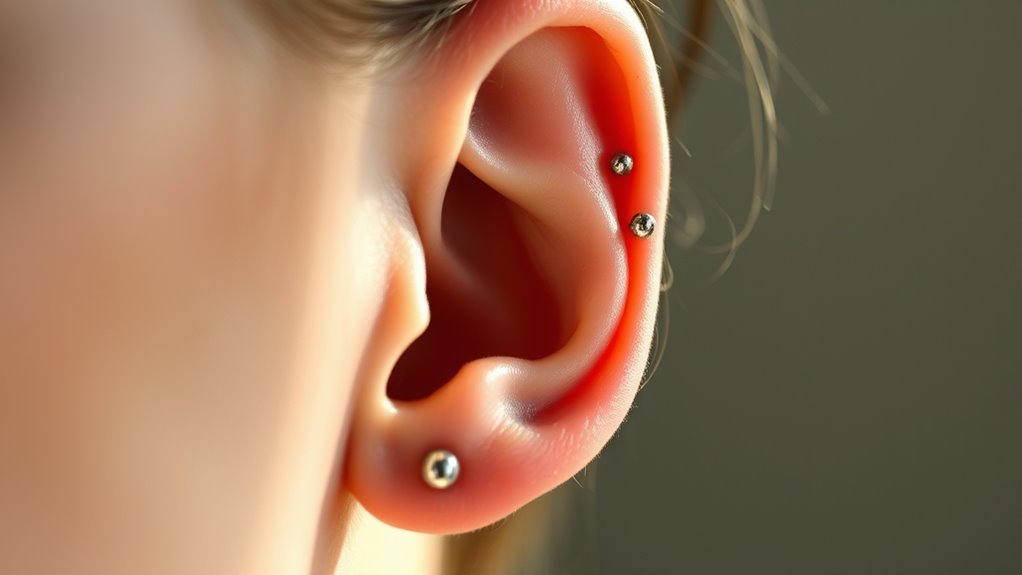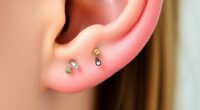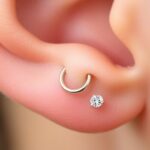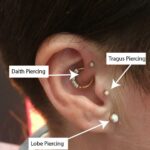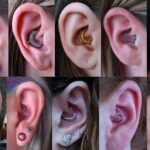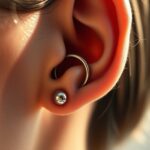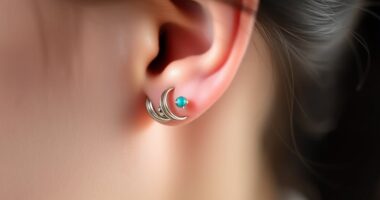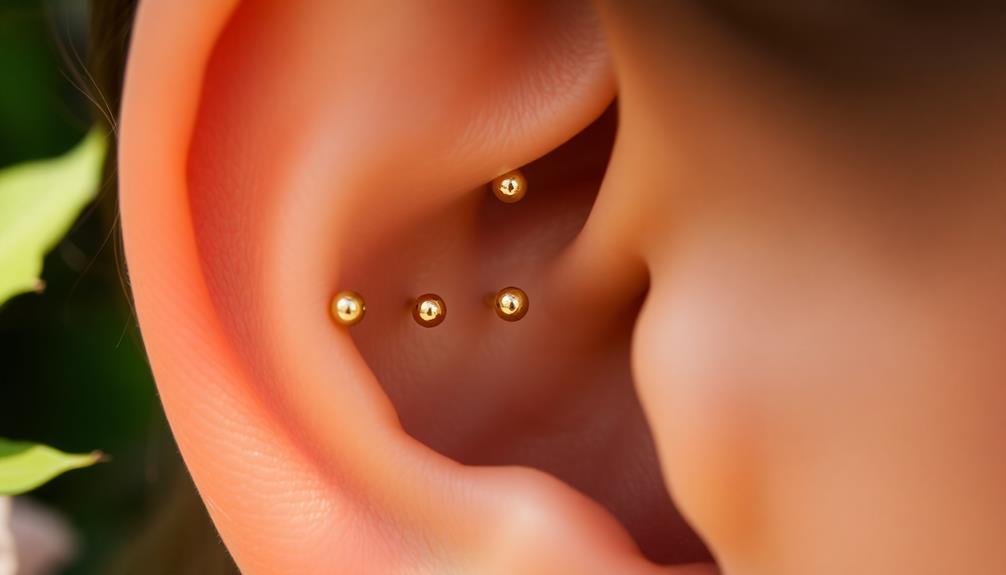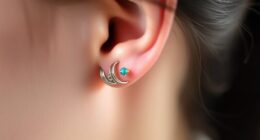While some people believe ear piercings can help reduce migraines by stimulating nerve pathways similar to acupuncture, scientific evidence is limited and inconclusive. Certain piercings near areas like the tragus or helix may influence nerve activity linked to headaches, but results vary individually. If you’re considering this approach, consult with a healthcare professional first. To understand more about how ear piercings might impact migraines and what current studies suggest, keep exploring the details.
Key Takeaways
- Scientific evidence linking ear piercings to migraine relief is limited and largely anecdotal.
- Some piercings near nerve-rich areas may stimulate pathways similar to acupuncture, potentially affecting headaches.
- Research findings are inconsistent; individual responses to ear piercings for migraines vary widely.
- Proper consultation with healthcare professionals is essential before using ear piercings as a migraine remedy.
- More rigorous studies are needed to confirm whether ear piercings can effectively reduce migraine frequency or severity.
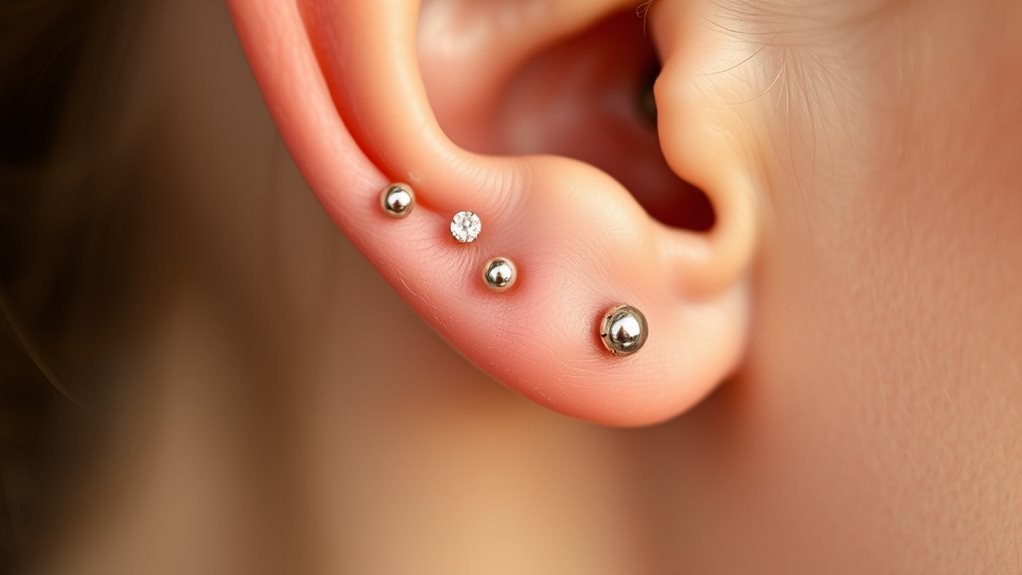
Many people with migraines have noticed that certain triggers can worsen their symptoms, and one often overlooked factor is ear piercings. While it might seem unrelated at first, some believe that strategically placed piercings can influence migraine intensity or frequency. This idea draws from traditional practices like acupuncture therapy, which involves stimulating specific points on the body to relieve pain, including headaches. Although ear piercings aren’t the same as acupuncture, they can sometimes target similar nerve pathways, potentially offering relief. However, scientific evidence remains limited, and results vary from person to person.
Research into whether ear piercings can directly reduce migraines is scarce, but some studies suggest a possible connection. Certain piercing locations may stimulate nerves linked to headache pathways, offering a form of natural therapy. For example, some recommend piercings near the tragus or helix, as these areas are close to nerve zones associated with pain modulation. When performed properly, these piercings might influence nerve activity and reduce headache severity. Still, it’s essential to understand that not everyone responds the same way, and piercings should never replace medical treatments or prescribed medications.
Alongside ear piercings, many migraine sufferers turn to alternative methods like herbal remedies. These natural options can sometimes complement other treatments, providing additional relief. Herbs like feverfew, butterbur, and magnesium supplements have been studied for their potential to prevent migraines or lessen their intensity. Combining herbal remedies with acupuncture therapy—known for its holistic approach—might enhance overall pain management. Some individuals find that integrating these strategies helps diminish their reliance on pharmaceuticals and improves their quality of life.
If you’re considering ear piercings as part of your migraine management, it’s essential to consult with healthcare professionals first. They can help you understand if this approach is appropriate for your specific condition and avoid complications. Remember, while some anecdotal reports suggest benefits, scientific backing is limited, and more research is needed to confirm effectiveness. Incorporating herbal remedies might be a safer and more evidence-supported adjunct, but always discuss these options with your doctor before starting any new regimen. Additionally, understanding the role of nerve pathways in pain modulation can provide deeper insight into how such alternative therapies might work.
Frequently Asked Questions
Are There Any Risks Associated With Ear Piercing for Migraine Relief?
You should know that ear piercing for migraine relief carries some risks. There’s an infection risk if you don’t keep the piercing clean, which can cause pain or other complications. Allergic reactions to jewelry materials like nickel are also possible, leading to swelling or irritation. To minimize these risks, choose a reputable piercer, use hypoallergenic jewelry, and follow aftercare instructions carefully.
How Long Does It Typically Take to See Results From Ear Piercings?
Think of your ear like a garden waiting to bloom. Usually, you’ll notice visible results within a few weeks, but healing time can vary from person to person. It might take 4 to 8 weeks for the piercing to settle and for you to feel relief if it’s helping with migraines. Patience is key—trust your body’s natural rhythm as your body heals and begins to respond.
Can Ear Piercings Replace Traditional Migraine Treatments?
You might wonder if ear piercings can replace traditional migraine treatments. While some see piercings as an alternative therapy for pain management, they shouldn’t replace proven medical options. Ear piercings may offer supplementary relief, but it’s crucial to consult your healthcare provider. Relying solely on piercings for migraine relief isn’t recommended, as effective pain management often requires an all-encompassing approach including medication and lifestyle adjustments.
Are Certain Ear Piercing Locations More Effective for Migraines?
Think of ear piercing locations as a map to relief. Certain spots, like ear acupuncture and auriculotherapy points, are believed to target migraine relief more effectively. You might find that piercings on specific areas, such as the helix or tragus, correspond to these therapeutic zones. While scientific evidence varies, many suggest that precise placement could enhance the potential benefits of ear acupuncture for reducing migraine frequency and intensity.
Is There Scientific Evidence Supporting Ear Piercing as a Migraine Remedy?
You might wonder if ear piercing works as a migraine remedy, but scientific evidence is limited. While some believe in alternative medicine, studies haven’t conclusively proven that ear piercings reduce migraines. Sometimes, the relief people feel could be due to the placebo effect, where belief influences the outcome. So, it’s best to approach this method cautiously and consult healthcare professionals for effective treatments.
Conclusion
While the idea of ear piercings easing migraines might seem like a tempting bridge to calm, current studies still cast shadows of doubt. It’s like chasing a mirage in the desert—promising but not yet proven. So, if you’re considering it, weigh the risks and benefits carefully. For now, it’s best to see this as a hopeful possibility rather than a guaranteed remedy, keeping your expectations as grounded as a sturdy oak.

